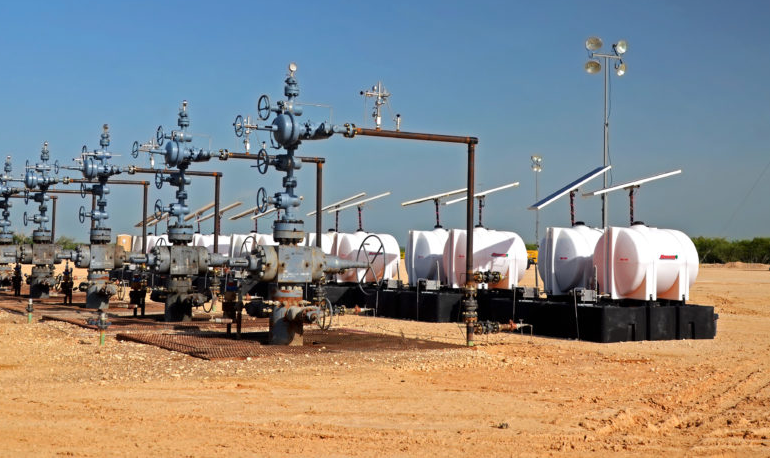Every single year, oil and gas producers invest millions of dollars to inject a wide variety of chemicals into their wells. This investment, while significant, is minuscule compared to the huge costs associated with the absence or failure of chemical injection. The threat of lost or interrupted production, corroded pipeline, and low quality of produced Fluids that accompanies poor chemical injection hangs over the head of every production manager and lease operator.
Naturally, this ever present fear tends to drive the conscientious producer to over inject the necessary preventative chemicals. This well-intentioned mistake can result in a plethora of additional complications, such as:
- Unforeseen solid formation or chemical reaction due to mismatched volume of chemical to produced fluid.
- Inability of production equipment to adequately remove excess chemical from produced fluid.
- Unnecessary increase in operational expenses & logistics in order to keep chemical tanks full.
These are just a few common complications introduced by over injection, not to mention the additional cost for the chemical itself. Fortunately, the process of optimizing chemical injection can be handled with relative ease through the application of two key steps: measurement and control.

2 Steps to Effective Chemical Management
Effective chemical management can be broken down into two core components: measurement and control.
- Measurement - The first, and arguably most important, piece of the chemical management puzzle is to understand exactly what volume of chemical is entering and exiting a given system. To accurately manage what is injected, when it is injected, and for how long, measurement integrity is absolutely essential. The specifics will vary, but a simple set of required components might include a tank level, a metering device on the chemical injection line, and some sort of pump status. Three benefits gained through the implementation of this first step are:
- The ability to define exactly when chemical tanks require filling and when trips to site must be made.
- Verification of chemical product consumed over a period of time.
- Improved awareness in instances of leakage, pump failure, and other potential equipment problems.
- Control – The second piece to chemical management is the implementation of an automated control system. Chemical injection control can easily be integrated into a larger, site wide control system, or can be a simple, localized application. This step is where the true optimization of the process takes place, meaning that neither too much nor too little chemical is injected. The primary objective here is to define a process variable that is to “control” the volume of chemical injected. For example:
- Corrosion Inhibitor injection rate is controlled by the volume of water produced.
- Methanol injection rate is controlled by a combination of pressures and temperatures in reference to the gas hydrate formation range.
These cause and effect relationships can easily be configured using a small RTU, such as Emerson’s FloBoss 107, which features a software package specifically designed for quick and easy chemical injection startup. The 107 is an example of a low cost scalable solution that can effectively manage the I/O and logic required for a wide range of chemical applications. It is more than capable of recording the required tank levels, pump status, and other necessary measurements, as well as outputting the appropriate injection rates and alerts in response.
An effective control system also features remote accessibility, allowing communication with broad SCADA systems. This added benefit of flexible site-level control allows operators to perform remote overrides, shutdowns, and monitoring of both individual chemical injection facilities and field-wide chemical assets.
Chemical management applications in the US O&G market are constantly evolving, and the clear next step for many upstream producers in the face of such a challenging environment is the implementation of cost-saving injection management technology. With the suite of hardware and software currently on the market to achieve this goal, it may at first seem to be an overwhelming task. However, whether you’re just getting started or have been on top of an effective chemical management strategy for years, it is a worthy goal, and we at Vinson stand ready to offer our wide range of services to assist in your measurement, automation, and control efforts.
What major challenges have you faced in your chemical management efforts? How have you overcome them or how can we help? Visit our ProductionManager Edge TM page to learn more about our applications or contact us and let us know what you think!
